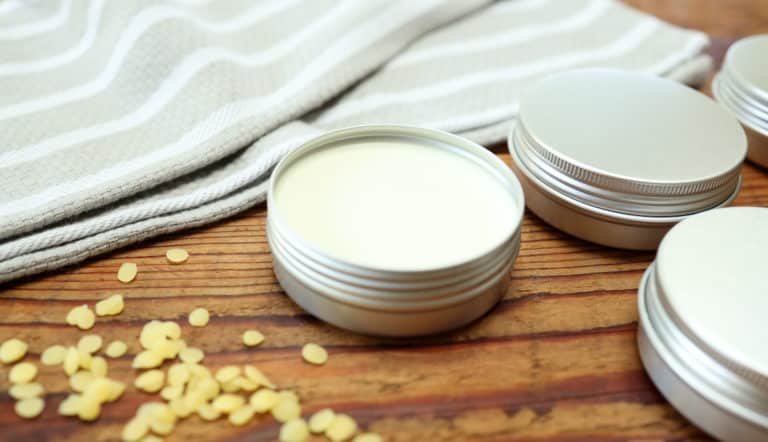How to Make Kale Powder With or Without a Dehydrator
When your garden is overflowing with more kale than you could ever possibly know what to do with, what do you do? Our favorite thing is to turn all of those leafy greens into kale powder. We’ll walk you through step by step how to make kale powder, preserving all the nutrient dense goodness those leafy greens offer!
Kale – A Nutritional Powerhouse
One of the main reasons we don’t want to let all of that Kale go to waste is because of how nutrient dense it is. While it is low in calories, it is abundant in health promoting vitamins and minerals. Kale is rich in vitamins A, K, B6, and C and minerals calcium, potassium, copper, and manganese. It is a part of the cruciferous family of vegetables along with cauliflower, brussels sprouts, cabbage, and broccoli, amongst many others.

Kale and other leafy greens tend to be much more digestible in a cooked form. This makes these nutrients present in kale more bioavailable when it is cooked than when it is eaten raw.
Why Grow Kale?
The beauty of kale is that it is an extremely robust plant, doing well in both the heat of summer and can often even overwinter and sustain nearly freezing temperatures. It grows very well in a wide range of growing zones and is extremely prolific.
There are several varieties of kale from straight to curly, red to green/blue. Some of the more popular varieties include Blue Curled Scotch, Lacinato, Red Russian, White Russian, Meadowlark, Siberian, and Red Ursa.

Our Experience Growing Kale
We have been growing kale for a number of years. It is a perfect plant for the beginning gardener because of how robustly it grows. While we struggled to grow some other crops, kale always shot up without fail.
The first few years, I felt overwhelmed trying to figure out how to use the bags and bags of kale that were lining my fridge. It seemed as though a hearty portion of cooked greens must be added to every meal to keep up.

Overtime, we began shifting our priorities and mindset to thinking how we could grow food not just to eat during growing season but all year round. When we made this change, I started to look into how we could preserve kale and other leafy greens.
How to Preserve Kale
There are a few different options when it comes to preserving kale. We have tried all of these methods at various points but have landed on our favorite being to turn into kale powder.
Freezing Kale
Probably the most common way to preserve kale is by freezing it. There is a debate in the food preservation world about whether or not it is necessary to blanche kale, or dunk it in boiling water, before freezing. Most people would agree that if you want to be safe, blanching would be the way to go.
You can freeze the kale in ziplock bags and it makes a great addition to soups or casseroles. The big downside to freezing kale is that it significantly changes the texture of the kale making it slimier.
Turning it into Pesto and Freezing
While pesto is traditionally made using basil, it can be made successfully using any leafy green, including kale.
The benefit of preserving kale this way is that unlike freezing kale, pesto freezes beautifully. This is a great way to use a significant amount of kale and transform it into a delicious sauce that you can enjoy all year round. This is a great recipe for kale pesto.
To freeze pesto, spoon pesto into ice cube trays or muffin cups (these silicone muffin cups are my preference) and freeze. Once frozen, pop out pesto and store in Ziplock bags. To thaw, simply move to fridge and let thaw and use as desired.

Alternatively, instead of making pesto, you could simply combine kale with olive oil or avocado oil in a high-speed blender or food processor. Then, pour the mixture into an ice cube tray or muffin cup. You can drop these frozen “ice cubes” directly into a pot of soup for an easy way to incorporate some homegrown kale.
How to Make Kale Powder
The beauty of making kale powder is that it is a perfect way to take loads and loads of kale and condense it down into only a mason jar you can store in your pantry. The process of making kale powder is simple – all you need to do is dry, blend, and store.
Step 1: Dry Out Kale
While the fastest way to do this is in a dehydrator, it is not absolutely essential to have a dehydrator.
If you are drying out the kale in a dehydrator, lay the kale leaves in a single layer on the sheets of your dehydrator and let dry at 100 to 125 degrees for roughly six hours until the leaves are fully dried and crispy.

Alternatively, if you do not have a dehydrator, you can lay the kale on a single layer on cookie sheets and dry in the sun or even on the counter. This is a similar method to hanging herbs to dry. While it will take significantly longer to dry out the kale this way, it is very doable and would have been the traditional method of dehydrating fruits and vegetables. Let the kale dry until the leaves are nice and crunchy like a fall leaf you step on.

Step 2: Blend
Once your kale leaves are dry, it’s time to blend them into a powder.
You will need to remove any stems or ribs on your kale leaves first; you only want the leaf portion to make your powder. Both a high-powered blender (we love our vitamix) or a food processor work great for making kale powder. Take your dried leaves and place them into the blender or bowl of your food processor. Blend or process until a fine powder is made.

Step 3: Store
One you have successfully turned your kale leaves into kale powder, it is time to store it for long term storage. The beauty of kale powder is that it is shelf stable and can be kept in the pantry for months. Our favorite way to store kale powder is in glass mason jars with tight fitting lids.

How to Use Kale Powder
There are many easy ways to put your kale powder to use. Simply sprinkle some into most any dish! They are a great addition to soups, stir fries, scrambles, casseroles, and smoothies. The beauty of kale powder is that it packs all of the nutrition that comes with kale but it really can’t even be noticed in any dish you add it too. It is an easy way to sneak in these leafy greens to any recipe where even the pickiest of eaters won’t notice.
We love adding kale powder to our potato crusted quiche, butternut squash enchilada casserole, and butternut squash lasagna.
Some of the above links are affiliate links. This means we earn a small commission on qualifying purchases at no cost to you. We are so appreciative of your support!
Pin it for later!










